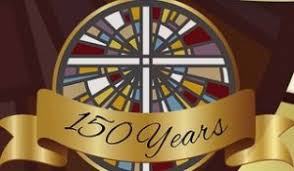| CONGREGATION |  |  |
| Pastor Bruce | ||
| Officers | ||
| Kids Corner | ||
History | ||
| Links | ||
Cemetery | ||
Home |
Some of the handwriting is not very legible. An attempt has been made to maintain the spelling as recorded in the churchbook, although that spelling often differs from the spelling of the names today. If you find transcription errors, please email the webmaster. A printable (8 1/2 by 11) copy of each original page is available on the site. Vor Frelsor's (Our Savior's) was a precursor to Concordia. That congregation began keeping its own records in 1883. Prior to that time, they were part of the Lake Park parish and baptism information was kept in that minister's book. At some point, information was transcribed from the Lake Park Parish Ministerialbøk. An attempt has been made to locate the original entries in the Lake Park minister's book, but only a few pages have been found. In the early years, names were recorded in Norwegian. Over time, the spellings of many names changed and might not be consistently recorded during the time of transition. In Norwegian, son is spelled 'sen.' Over time, most families began to use 'son' (Anderson rather than Andersen, for example). There are also Norwegian letters - notably å and ø - that do not appear in English. Å was usually translated as a double a - Storåsli became Storaasli - and most often the ø was simply replaced by a regular o. It is also worth noting that there is not a silent 'e' in Norwegian. An 'e' at the end of a word is pronounced 'eh' or 'ah.' In Norwegian Marie is pronounced Maria; Maline, Malina, etc. Over time spellings changed to reflect pronunciation. Names were also completely Anglicized: Ingeborg might become Olive; Bjorn, Ben; Helga, Harriet; etc. Norwegians did not come to America with a sense of a last name as a family name. In Norway there were strict naming conventions surrounding the first name (first son named for paternal grandfather, second son for maternal grandfather, etc.). The second name was a patronymic - it explained who that individual's father was - Anderson (son of Ander) or Andersdatter (daughter of Anders - abbreviated dtr). In America, the use of women's patronyms disappeared first. Women might still use their patronymic, but it would most often be the male version ('son'). In Norway, the third name was actually the name of the current place of residence. When people moved, their last name changed. In Norway, the third name was really the least important. In America, it was the most important. This took some getting used to! Many immigrants started out using their patronymic as a last name. Other immigrants used the name of a place in Norway. Usually immigrants chose the name of the farm where they lived when they emigrated, but some chose farm names that reflected the place that individual had been born or had other significance. In America, some men continued to take the "name of the farm" (actually, the family name of the person who owned it) when they bought an existing farm - even if they previous owner was of a different ethnic background. With so many Olsens (sons of Ole), Andersens (sons of Ander), etc. more than a few who started out using a patronymic decided to change to a place name. Not all family members made the same choices. Some of an immigrant's sons might use their father's patronymic as a last name, others might use their own - Bjorn Andersen's sons might use a variation of Andersen (their father's patronymic) or Bjornson (their own patronymic). They might also choose a farm name - Thortvedt and Juve are examples of farm names. You will find evidence of these norms and transitions reflected in the record-keeping. Unlike Americans, a name was not believed to reflect marital status; in old Norway men and women kept their own names reflecting their own ancestral connections and place of residence In the early records, you will see an "H" or Hustru in front of most of the women's names. Hustru is the Norwegian word for wife, so H. is like the abbreviation Mrs. A pige is a young unmarried woman; single women's names were often prefaced by a "P." Ugte means unmarried, and you will see this note next to a few of the baptismal entries. [Back] |
| Top of Page | Last Page Viewed | ||
Copyright 2022 Concordia Lutheran Church 6637 80th Avenue North Glyndon MN 56547 | |||
| Site Index | Search the Website | Contact Us | |